Rare and Exceptional Pieces at Bonhams Fine Chinese Art Sale in London
Lot 109. A rare and large gilt-bronze figure of Dharmapala Begtse Chen, 18th century, 36.8cm (14 1/2in) high (2). Estimate £150,000 – 200,000. Photo: Bonhams.
LONDON - The Fine Chinese Art sale, to be held at New Bond St, London on Thursday 11 May, will include many rare Chinese ceramics and works of art from European and Asian private collections. Following on The Jongen-Schleiper Collection of Fine Thangkas, this sale offers a diverse selection of Buddhist bronze figures from the Ming to the Qing dynasty, highlighted by the rare and large gilt-bronze figure of Dharmapala Begtse Chen, 18th century, estimated at £150,000 – 200,000, Lot 109.
Lot 109. A rare and large gilt-bronze figure of Dharmapala Begtse Chen, 18th century, 36.8cm (14 1/2in) high (2). Estimate £150,000 – 200,000. Photo: Bonhams.
The Lord of War robustly cast and gilt standing boldly with feet apart above eight snakes on a lotus pedestal, wearing armoured chainmail and robes fastened in place with a ferocious lion mask, kirttimukha, across his bulging belly, a belt of human heads hanging loosely around the waist, the fearsome facial expression and powerful stare of the three bulging eyes framed by a crown of five skulls and flaming red hair.
Provenance: Sotheby’s New York, 20 March 1997, lot 126
Note: Begtse Chen, also known as Chamsing, is one of the eight famous Dharmapala (Dharma protector) in Tantric Buddhism.
The origin of Begtse Chen can be traced to a pre-Buddhist deity in 16th century Mongolia. Begtse Chen reputedly battled Sonam Gyatso,
the Third Dalai Lama, who was travelling en route to Mongolia in 1575. Begtse Chen was defeated and he converted to Buddhism in a dramatic move, marking the advent of Buddhism in Mongolia.
The dissemination of Buddhism in the region was further facilitated by a pivotal episode in history. In 1577, Sonam Gyatso, leader of the Gelug School of Tibetan Buddhism, formed an alliance with Altan Khan, ruler of the Tümed Mongols, which resulted in the active promotion of Buddhism in Mongolia. Following the proselytisation of Altan Khan to Buddhism and the Gelug School, temples and monasteries were commissioned and built. In the process, Begtse Chen, a deity of alien origin, was incorporated into the pantheon of Tibetan Buddhism as a protector of the Dharma, with its cult subsequently disseminated and popularised to a wider diaspora. The rise of Begtse Chen and his cult in Tibetan Buddhism are therefore evidence of the gradual localisation of the religion in Mongolia since late 16th century, as well as testifying to the vigorous integration of Tibet and Mongolia in both political and cultural dimensions of the contemporary period. The phenomenon spread much more widely when Qing China (ruled by the Manchurians) adopted Tibetan Buddhism and increasingly exerted its political influence in Tibet throughout the 18th century.
The present lot is exceptionally rare in many respects. The naturalistic modelling of the swaying body; its casually raised and bent right arm, held in vitarka mudra representing the transmission of the teachings by the Buddha, has subtly emphasised the benevolence of the Buddhist faith with its gracious body gesture. In contrast, the dramatically sculpted facial features: the bulging eyes, precisely cast fang teeth and rolled tongue under fiery hair, with its robust chainmail breastplate and skull tiara, have successfully portrayed a powerful and threatening imagery of the deity in its wrathful incarnation. Together, the exquisite quality of modelling and casting, as described above, testifies to the fine craftsmanship of 18th century Tibet; whilst the passive iconographies displayed by the present lot serve as a statement of its faithful devotion to defending the orthodoxy of Buddhist faith. For a comparable but smaller gilt-bronze figure of Begtse, Qianlong, made by the Imperial workshop in Beijing, see Classics of the Forbidden City: Tibetan Buddhist Sculptures, Beijing, 2011, pp.273-274, no.171.
An exceptionally rare cloisonné enamel cup stand, incised and blue-enamelled Xuande mark and of the period (1425-1435), estimated at £20,000 – 30,000, Lot 128, is one of only four known of this type with this Imperial mark, with similar examples in the British Museum and private collections. It would have been specially commissioned most probably for the use of the Emperor.
Lot 128. An exceptionally rare cloisonné enamel cup stand, incised and blue-enamelled Xuande mark and of the period (1425-1435), 19.3cm (7 5/8in) diam. Estimate £20,000 – 30,000 (€24,000 - 36,000). Photo: Bonhams.
The interior with a domed countersunk central boss finely enamelled with a solitary lotus flowerhead, encircled by lappets on the sloping flange, the well with scattered florets borne on leafy scrolls, all in blue, yellow, red, green and white enamel against a turquoise ground, retaining some gilding and with the four pins visible on the underside used to secure the applied central boss above, the incised mark on the base infilled with blue enamel.
Provenance: an English private collection and thence by descent
Note: The present lot represents one of the rarest and amongst the earliest cloisonné enamel wares made for the Imperial court during the early Ming dynasty. Other than the present lot, only seven other Xuande mark and period cloisonné enamel and gilt-bronze cup stands appear to have been published. These are all of similar form and size with certain variations in the decorative registers and marks.
The small number of extant examples indicate that very few were produced; however, these were made using three different types of Xuande marks:
First, the double-outlined incised six-character mark of which three examples are known (see the Compendium of Collections in the Palace Museum: Enamels, 1, Beijing, 2010, pp.138-139; the one in the Museum Rietberg, Zurich, H.Brinker and A.Lutz, Chinese Cloisonné: The Pierre Uldry Collection, London, 1989, pls.23a and 23; and the third which was sold at Sotheby’s London on 7 November 2012, lot 433).
Second, the cast gilt-bronze four-character mark of which one example is known (see the Compendium of Collections in the Palace Museum: Enamels, 1, Beijing, 2010, pp.138-139).
Third, the incised and blue-enamelled encircled six-character mark (as on the present lot), of which three other examples appear to have been published: the Sir Harry and Lady Garner example in the British Museum, is illustrated by H.Garner, Chinese and Japanese Cloisonné Enamels, London, 1962, pls.B and 95a; the second from the McLaren Collection, was sold at Sotheby’s London, 16 June 1999, lot 704 and was also illustrated by G.Eskenazi and H.Elias, A Dealer’s Hand: The Chinese Art World through the Eyes of Giuseppe Eskenazi, London, 2012, p.242, pl.174; and the third example of this type was sold at Phillips London, 9 June 2000, lot 234.
Image courtesy of the Trustees of the British Museum © The Trustees of the British Museum.
Phillips L McLaren collection; image courtesy of Eskenazi Ltd., London.
Philips London, 9 June 2000, lot 234.
Sir Harry Garner, Chinese and Japanese Cloisonné Enamels, London, 1962, pp.53-54, wrote that ‘the cloisonne dish [cup stand] has a six character Hsuan-te mark incised on the base, the incision being filled in with dark blue enamel. The presence of the enamel makes it certain that the mark is contemporary with the piece.’
Furthermore, images of incised and blue-enamelled cup stands all show the same structural characteristic of the four pins visible at the
base around the mark securing the upper boss to the dish.
However, even within the ten-year reign of the Xuande emperor, the quality of the enamels could vary significantly; see for example a cloisonné enamel stem cup, early Ming dynasty, illustrated in the Compendium of Collections in the Palace Museum: Enamels, 1, Beijing, 2010, p.120, which shows a similar floral design to that found on the present lot.
A very rare and large turquoise glazed fish bowl, Yongzheng seal mark and of the period (1723-1735), estimated at £30,000 – 50,000, Lot 147, is possibly the one of this glaze to have survived, with other related examples known in different glazes and extant in the Qing Court Collection in the Palace Museum, Beijing.
Lot 147. A very rare and large turquoise glazed fish bowl, Yongzheng seal mark and of the period (1723-1735), 35.9cm (14 1/8in) high (2). Estimate £30,000 - 50,000 (€36,000 - 60,000). Photo: Bonhams.
Heavily potted, the body of compressed globular form with rounded sides curving to a lipped rim, the exterior under a lustrous glaze of turquoise colour suffused with a network of fine crackles, wood stand.
Provenance: A distinguished European private collection, and thence by descent
Note: The present lot is very rare for its size and use of the turquoise glaze; however, related examples, Yongzheng seal mark and of the period, from the Qing court collection, exist in other glazes such as teadust, ru, guan, lazurite-blue, and carved dragon design in light greenish-blue glaze, illustrated in The Complete Collection of the Treasures of the Palace Museum: Monochrome Porcelain, Beijing, 1999, pls.135, 195, 206, and 214. See also a turquoise glazed melon-shaped jar, Yongzheng seal mark and of the period, from the Qing court collection, illustrated ibid., pl.150.
Compare a ru-type glazed jardinière, Yongzheng seal mark and period, which was sold at Christie's Hong Kong, 1 June 2011, lot 3735.
An English private collection comprising a diverse collection of ceramics, bronzes and cloisonné enamel, Lots 160 – 181, includes two rare Imperial Ming dynasty porcelain vessels: a massive blue and white 'lotus jar, guan, Jiajing mark and of the period (1522-1566), estimated at £50,000 – 80,000, measuring 50.8cm high, Lot 162; and a very rare wucai 'dragon' vase, gu, Wanli mark and of the period, estimated at £30,000 – 50,000, Lot 167.
Lot 162. A massive blue and white 'lotus' jar, guan, Jiajing six-character mark and of the period (1522-1566), 50.8cm (20in) high. Estimate £50,000 - 80,000 (€60,000 - 96,000). Photo: Bonhams.
Heavily potted, the ovoid body painted in vibrant cobalt-blue around the shoulders with jewelled strings suspending stylised chimes, above a continuous scene of lotus blossoms borne on an undulating scroll issuing curling leaves, all above a band of upright lotus leaves.
Provenance: a British private collection, and thence by descent
Note: The shoulders of the present lot are decorated with the yingluo (瓔珞) pattern. The yingluo pattern derives from the jewellery of stringed pearls and ornaments worn around the neck, chest, wrist or ankles by the Indian aristocracy and commonly seen on Buddhist sculpture. It was a particularly popular design on ceramics from the mid to late Ming dynasty.
It is rare for such large jars from the Jiajing period to have survived. However, a jar of similar size and near identical design, Jiajing mark and of the period, belonged to the Safavid Shahs of Persia and was housed in the Ardebil Shrine; see J.A.Pope, Chinese Porcelains from the Ardebil Shrine, London, 1981, pl.79. See another very similar jar with the same motif, Jiajing mark and of the period, illustrated in Chinese Ceramics in the Idemitsu Collection, Tokyo, 1987, pl.702.
Lot 167. A very rare wucai 'dragon' vase, gu, Wanli mark and of the period (1573-1619), 40cm (15 3/4in) high. Estimate £30,000 - 50,000 (€36,000 - 60,000). Photo: Bonhams.
Modelled in the form of an archaistic gu vessel supported on a tall spreading foot with decorated leafy peach sprays and perching by magpies, the bulbous central section enamelled in vivid tones with four foliate cartouches each enclosing a writhing five-clawed dragon striding in pursuit of the flaming pearl amidst billowing clouds, separated by lotus heads on a dense ground of scrolling foliage, raising to a flaring trumpet neck with lotus scrolls above upright stiff leaves and beneath a geometric band on the rim, the interior similarly decorated with a band of lotus foliage.
Provenance: a British private collection, and thence by descent
Note: The dynamic forms of the coiling five-clawed dragons with their sharp powerful claws, as well as the lithe floral scrolls, all reveal the superb artistry, elegance and quality of Imperial Wanli porcelain at its best.
Compare with a very similar wucai 'dragon' vase, Wanli six-character mark and of the period, from the Qing court collection and illustrated in The Complete Collection of Treasures of the Palace Museum: Porcelains in Polychrome and Contrasting Colours, 2007, Hong Kong, p.36, no.33.
A wucai 'dragon' vase, Wanli six-character mark and of the period, Palace Museum, Beijing. Image courtesy of the Palace Museum, Beijing
Wanli-era wucai pieces attracted particularly high valuations in Japan where they were used at tea ceremony utensils and handed down in former daimyo and aristocratic families. A related wucai zun vase, with dragon and phoenix design, in the Museum of Oriental Ceramics, Osaka, is illustrated in A Jiajing and Wanli Exhibition, Tokyo, 2016, fig.6.
The form of the present vase is rare amongst wucai vases of the Wanli period, which are more typically of partial square or faceted form. See, however, a smaller wucai gu vase, Wanli mark and of the period, of related design, which was sold at Christie's Paris, 7 June 2011, lot 240.
Made for a scholar's desk, a rare early blue and white brush pot, bitong, Kangxi (1662-1722), estimated at £60,000 – 80,000, Lot 194, is vividly painted with a narrative depicting the female generals of the Yang Family, a story imbued with loyalist feelings to the previous Ming dynasty.
Lot 194. A rare early blue and white brush pot, bitong, Kangxi (1662-1722), 19.7cm (7 3/4in) diam. Estimate £60,000 - 80,000 (€72,000 - 96,000). Photo: Bonhams.
Exquisitely painted around the exterior in vibrant blue with a continuous scene of ladies on horseback amidst willow trees, overseen by a dignitary and his entourage standing beneath a parasol, the dignitary's arms raised and holding a fan in his right hand signalling to the ladies on horseback, all between decorative borders at the rims, raised on a channelled foot encircling the countersunk base.
Provenance: T.Gordon Little
Christie's New York, 30 March 2005, lot 359
Note: The scene of ladies on horseback derives from stories and folklore surrounding the female generals of the Yang family. The male members of the military Yang family had all died defending the Northern Song dynasty against the Khitan-ruled Liao dynasty in the north; and the Tangut ruled Western Xia dynasty in the north-west.
As the Tanguts invaded, the twelve women in the family participated in the campaign against the Tangut Xia. The women generals of the Yang family not only proved their martial skill and bravery, but their supreme loyalty to the Song dynasty.
The subject matter of the Yang family fighting foreign invaders, which was popular during the 'Transitional' and early Kangxi periods, is an illustration of how even during the early Kangxi reign, many Chinese scholars still viewed the Manchu Qing dynasty with aloofness.
A large blue and white baluster vase decorated with this scene is illustrated in The Taft Museum: Chinese Ceramics and Works of Art, New York, 1995, pp.587, no.1931.138; the same scene of the female generals of the Yang was depicted on a famille verte plate, Kangxi, which was sold at Sotheby's, London, 12 May 2010, lot 71.
A superbly enamelled Imperial famille rose twelve-leaf screen, Jiaqing (1796-1820), estimated at £100,000 – 150,000, Lot 214, would have graced one of the Imperial halls, offering the beholder auspicious wishes associated with the Daoist Immortals colourfully enamelled on each leaf. It is likely it would have been commissioned for a special Imperial celebration such as an Imperial birthday.
Lot 214. A superbly enamelled Imperial famille rose twelve-leaf screen, Jiaqing period (1796-1820). Overall 362cm (142 1/2in) wide x 152cm (59 3/4in) high. Estimate £100,000 - 150,000 (€120,000 - 180,000). Photo: Bonhams.
Each leaf enclosing five famille rose porcelain plaques; the main famille rose panels superbly enamelled with groups of Immortals and sages, each with his attribute, engaged in various pursuits in a mountainous river landscape with trees, flowers and bamboo; the smaller rectangular top, middle and bottom famille rose panels colourfully decorated with a pair of confronted chi dragons clawing at a foliate lotus blossom, each panel framed by a floral scroll on a lime-green ground; the square famille rose plaques each finely enamelled with a flower representing one of the twelve months, all set within a hardwood and possibly zitan frame.
Note: Screens were commonly used in ancient China to keep out draughts, shut out light and partition rooms. Apart from practical functions however, screens also had an essential social and decorative function. In the Imperial halls, they were often used as backdrops to thrones, reinforcing the Imperial eminence and stature behind the throne. The importance of such screens is further demonstrated in that no cost was spared in their production, using precious materials generously, such as zitan and huanghuali woods, cinnabar lacquer, gilt on black lacquer and embellishments with porcelain panels, hardstones, and cloisonné and painted enamels.
The twelve leaves are resplendently inset with 64 famille rose porcelain plaques. These are superbly enamelled with mythical imagery of Daoist Immortals, auspicious flowers and birds, laden with puns, rebuses and symbolic significance.
Taking the main panels on the screen from left to right:
Panel 1
The first panel on the far left depicts Liu Hai tempting his three-legged toad with strings of gold coins. Together, they are symbolic of wealth and prosperity. The Chinese word for 'toad' is chan (蟾); and in some dialects, the character chan is a homophone to the character for 'money' or qian (錢). Thus, in a dialect, one could easily hear 'Liu Hai playing with the toad' as 'Liu Hai playing with gold coins'. Hence the present plaque bears the auspicious wish for wealth and good fortune.
Panel 2
The second panel depicts two sages pointing up at two red bats flying in the sky; a pair (shuang 雙) of bats (fu 蝠), is a rebus for 'double blessings' (shuangfu 雙福). Beside the sage is a deer (lu 鹿) which is a homophone for 'emolument' (lu 祿) and represents success in office. It is possible, therefore, that the sage next to the deer is a representation of the Star God of Lu. Across the stream another grey-bearded sage proffers a peach, a symbol of longevity.
Panel 3
The third panel depicts three female immortals, probably Guanyin flanked by Buddhist lion, Magu carrying the jar containing the elixir of immortality, and the Spirit of the Well holding a ruyi sceptre, descending from a palace shrouded in wispy clouds.
Panel 4
The fourth panel depicts two sages by a stream with an attendant carrying a red-headed crane, one gentleman points at the sky to the crane in the next panel; in the foreground an elderly sage with a staff is followed by a child carrying a basket of flowers, possibly representing Lan Caihe.
Panel 5
The fifth panel depicts the God of Longevity, Shoulao, with a prominent cranium and a long staff, surrounding him are children, one riding a deer and holding a peach, further symbols of longevity and prosperity, two boys pointing to a flying crane in the sky.
Panel 6
The sixth panel depicts Magu, the Goddess of Longevity, on a log raft with He Xiangu steering it. Magu (literally meaning 'Hemp Maiden') is portrayed wearing a cape of hemp leaves, beside a basket of flowers and a jar of fungus longevity wine. He Xiangu is distinguishable from the lotus she is wearing. Magu points up towards the shore where a Buddhist lion treads behind another female Immortal.
Panel 7
The seventh panel depicts three wizened old sages standing together, one holding a melon above his head.
Panel 8
The eighth panel depicts the Hehe Erxian floating on the clouds, the twin Immortals carrying a lotus (he 荷) and a box (he 盒), both homophones with harmony (he 和) and union (he 合). Beneath them, a young boy beside a man, possibly the Star God Fu, the God of good fortune, proffers a floral sprig to the Star God Lu, holding a ruyi sceptre beside a child, and attendant carrying a vase with a halberd arrow (ji 戟), which is a homophone for 'grade' (ji 級). The theme of the panel is thus the wish for attainment of good fortune, prosperity, rank and influence.
Panel 9
The ninth panel depicts four of the 'Eight Daoist Immortals'. Seated in a raft is the Immortal Lan Caihe beside a basket of flowers with the Immortal He Xiangu steering the vessel. The latter was said to have had a divine revelation in a dream, and ate powdered mica to prolong her life. The two Immortals gaze from the raft across the stream to the Immortal Cao Guojiu holding castanets, said to have the power to purify his surroundings. In the foreground, the Immortal Han Xiangzi plays the flute beside a crane, a symbol of longevity and immortality.
Panel 10
The tenth panel depicts the other four of the 'Eight Daoist Immortals'. Atop a mountain terrace, Zhongli Quan proffers a peach. Below on the river, Li Tieguai, or Iron-crutch Li, rides atop the waves on a magical double-gourd said to be filled with medicine to heal the sick. Further down the stream, standing atop a carp, is Zhang Guolao carrying his 'fish drum', a bamboo cylindrical tube that carried iron mallets dispelling evil. Beside Zhang Guolao is Lu Dongbin, with his sword and fly whisk that dispels evil, standing atop a lotus leaf.
Panel 11
Flying above in the sky on a phoenix is the Queen Mother of the West, Xiwangmu. According to legend, the Queen Mother of the West lives in the mythical Western Kunlun Mountains near the legendary Orchard of Immortality Peaches. These peaches would ripen only once every three thousand years, and she would hold a large banquet for all the Immortals to eat these peaches so that they could prolong their life for another six thousand years. Beneath her are three sages gesticulating wildly around three bats, symbols of fortune.
Panel 12
The twelfth panel depicts a sage carrying on his shoulder a sprig of peaches as he gazes up at Xiwangmu in the previous panel. He could perhaps be a representation of Dongfang Shuo, who was a 'banished Immortal' for stealing Xiwangmu's peaches.
Twelve floral panels
Twelve square panels are finely enamelled with a variety of floral sprays. The blossoms include peony, lotus, chrysanthemum, camellia, prunus, apricot, poppy, rose, morning glory, wintersweet, aster, and nandina as well as lingzhi fungus and bamboo. The flowers are probably a symbolic representation of the twelve months.
Further symbolism is represented by the top and bottom panels, each enamelled with a bat suspending a cluster of peaches above a lotus blossom. These symbolise the wish for blessings and longevity whilst the lotus, one of the Eight Buddhist Emblems is also representative of purity. The set of panels decorated with a pair of confronted chi dragons.
Compare with a magnificent Imperial twelve-leaf screen, Jiaqing, which was sold in these rooms on 15 May 2014, lot 88.
An Imperial very rare famille rose and huanghuali twelve-leaf screen, Jiaqing period (1796-1820). Sold for £782,500 (€937,912) at Bonhams London, 15 May 2014, lot 88. Photo: Bonhams.
Amongst one of the most charming jade carvings is a rare pale green and russet jade carving of a bear, Song dynasty or earlier, estimated at £10,000 – 15,000, Lot 226. The carving is one of a number of jade carvings offered from collection of the painter John Christopherson.
Lot 226. A rare pale green and russet jade carving of a recumbent bear, Song Dynasty or earlier, 9cm (3 1/2in) long. Estimate £10,000 - 15,000 (€12,000 - 18,000). Photo: Bonhams.
The stout animal finely carved with its head resting on its front paws, its small ears tucked back, its tail wrapped around its right haunch, the smoothly-polished stone of pale green tone streaked with russet skin.
Provenance: John Christopherson (1921-1996) collection of Chinese jades, acquired from William Clayton Ltd., London on 21 June 1967
An English private collection
Note: John Christopherson is known for his later career as an artist, which only began in 1950, when he met Jacob Epstein and started to visit West End Galleries in London. In 1959 he resigned from the Civil Service and became a full-time painter, known for small townscapes, exhibiting at the Leicester Galleries, the Marjorie Parr Gallery, Agnews and England & Co. His last exhibition was a retrospective held in 1995 at the Woodlands Art Gallery in Blackheath. Christopherson was an avid letter writer, corresponding with a wide group of dealers and fellow-collectors who shared his interest in art and indeed in jade carvings. He visited the London auction rooms as well as visiting Portobello Market regularly on Saturdays and was known to produce his most recent purchase, often a Chinese early jade carving. By 1994 his illness prevented him from visiting central London.
Bears inhabited the forests of North China and were frequently depicted in burials probably to protect their dead from harmful influences. The world for bear, xiong 熊, is a homophone with brave and powerful, xiong 雄.
According to the 'Rites of Zhou', Zhou Li (周禮), edited during the Han dynasty, bears were employed in exorcism rituals, their skin worn over the head of the performer who, holding a lance and a shield, led the officials to perform the Seasonal Exorcism by searching through houses and driving away pestilences. See J.Lagerway, Early Chinese Religion. Part One. Shang through Han (1250 BC-220 AD), Boston, 2008, p.287.
A related jade carving of a recumbent bear, Song/Jin dynasty, was sold at Sotheby's Hong Kong, 8 April 2013, lot 3094.
A large and fine selection of snuff bottles, many bearing extensive provenance, is offered from an Asian private collection, Lots 276 – 293, including a rare white jade 'double-melon' snuff bottle, 18th/19th century, estimated at £5,000 – 8,000, Lot 276.
Lot 276. A rare white jade 'double-melon' snuff bottle, 18th-19th century, 5cm (2in) high. Estimate £5,000 - 8,000 (€6,000 - 9,600). Photo: Bonhams.
Carved with nine melon lobes and joined on both sides by a butterfly displaying finely-incised wings, the stone of even greenish-white tone with faint cloudy and russet inclusions.
Provenance: Eric Young, by repute
An Asian private collection of snuff bottles
Note: The wish for ceaseless generations of descendants, Guadie mianmian (瓜瓞綿綿), which the design invokes, appears to have originated from the 'Book of Odes', compiled between the 11th and the 7th century BC. The verses contained in this anthology in fact make abundant use of plant and animal analogies to describe female beauty and human accomplishments. Butterflies die (蝶) are a homophone with the character making up the word for little gourds die (瓞), symbolic of fertility because of the multitude of their seeds.
Conjoined bottles shaped as melons are rare. Compare with a similar jade snuff bottle, carved as a melon, Qianlong, illustrated in The Complete Collection of Treasures in the Palace Museum. Snuff Bottles, Hong Kong, 2003, n.185, p.129.
A very impressive selection of rhinoceros horn libation cups, Lots 294 – 310, is offered from a number of distinguished European private collection.
A testament to the superb craftsmanship achieved during the 18th century, is a very rare lacquer and bamboo two-part centre-table, Yongzheng/ Qianlong (1723-1795), estimated at £100,000 – 150,000, Lot 324. The exceptional table is shaped as two shaped leaves, which when joined form a yinyang. Related lacquered furniture can be found in the Qing Court Collection in the Palace Museum, Beijing.
Lot 324. A very rare lacquer and bamboo two-part centre-table, Yongzheng-Qianlong period (1723-1795), 87cm (37 1/4in) high x 160cm diam (63in). (2). Estimate £80,000 - 120,000 (€96,000 - 140,000). Photo: Bonhams.
The top formed as two conjoined leaves, exquisitely carved and lacquered in various levels of relief with ruyi-clouds and flowers in red and green on a gilt ground, the bamboo supports with key fretwork, supporting an undertier in brown lacquer richly decorated with scrolls and foliage.
Provenance: an Italian private collection
Note: Elegantly modelled to resemble two adjoining leaves, this exceptional table is a rare example of remarkable furniture that was likely to have been manufactured during the reign of the Yongzheng emperor. However, the Imperial demand for lacquered furniture continued on into the Qianlong period.
The wispy lingzhi-shaped clouds, decorating the surface of the table, were very popular during the Yongzheng period. Clouds, yun (雲), form a visual pun on the word 'yun' (運), meaning 'fortune', 'luck' or 'fate'. In an agricultural society, the rain-bearing clouds would have been perceived as a benevolent omen, for the necessary irrigation of the crops. This would also have been read as a sign that the emperor, the 'Son of Heaven', held the mandate to rule.
After the Yongzheng emperor's disputed ascent to the throne, he seemed to have had a particular fondness for the physical as well as symbolic appearance of auspicious clouds. Scenes of auspicious five-coloured clouds appearing above the sky were recorded several times in the Palace memorials presented to the emperor and legitimised his rule. The Imperial archives also recorded that paintings depicting such particular type of clouds were ordered by the Yongzheng emperor in 1730, see Lin Lina, 'Auspicious symbols and scenes of the Yongzheng period', in Feng Mingzhu, Harmony and Integrity: The Yongzheng Emperor and His Times, Taipei, 2009, pp.374–399.
A related lacquered circular table, decorated with floral scrolls, Yongzheng, in the Palace Museum, Beijing, is illustrated in Caihui jiaju, Beijing, 2009, p.107, pl.67. Another table that uses bamboo to form the decorative aprons and supports, Yongzheng period, is also illustrated in Ibid., p.97, pl.58.
A French private collection of huanghuali furniture, Lots 327 – 330, includes a rare huanghuali 'Southern Official 'S Hat' Yokeback armchair, nanguanmaoyi, 17th/18th century, estimated at £100,000 – 120,000, Lot 328.
Lot 328. A rare huanghuali 'Southern Official's Hat' yokeback armchair, Nanguanmaoyi, 17th-18th century, 118cm high (46 1/2in) high x 61cm (24in) wide x 45.6cm (18in) deep. Estimate £100,000 - 120,000 (€120,000 - 140,000).
With a narrow crest-rail supported on slender, gracefully tapered and curved rear posts flanking the S-shaped splat, above the mat seat set within the beaded frame with rounded edges, the elegantly curved and slender arm rails supported by vertical posts and terminating in outswept front rails, all above plain aprons and spandrels, the legs of rounded square section joined by a front footrest and back stretchers, the wood of a rich honey-brown tone.
Provenance: a French private collection
Note: Characterised by remarkable elegance and linearity of forms, yoke-back armchairs, like the present lot, were associated with the status and authority of the scholarly elites of Imperial China. A woodblock print in the 1616 edition of 'The Golden Lotus' Jing Ping Mei, for instance, depicts the main male figure and his spouse seated on guanmaoyi chairs, with the others sitting on stools. For a discussion about guanmaoyi chairs, see C.Evans, 'From the Ornate to the Unadorned', in Journal of the Chinese Classical Furniture Society, Spring 1993, pp.24-33.
Compare with a huanghuali guanmaoyi armchair illustrated by Wang Shixiang in Classical Chinese Furniture, Hong Kong, 1986, pl.45.
A pair of similar chairs, dated to the 17th century, was sold at Sotheby's London, 6 November 2013, lot 52.
Asaph Hyman, International Head, Chinese Art, commented: "We are privileged to bring to light such a large number of fine and rare ceramics and works of art exemplifying China's Imperial past, having been admired and carefully preserved by previous generations."

/https%3A%2F%2Fprofilepics.canalblog.com%2Fprofilepics%2F1%2F0%2F100183.jpg)
/https%3A%2F%2Fstorage.canalblog.com%2F03%2F02%2F119589%2F96711876_o.jpg)
/https%3A%2F%2Fstorage.canalblog.com%2F11%2F31%2F119589%2F94773502_o.jpg)
/https%3A%2F%2Fstorage.canalblog.com%2F20%2F83%2F119589%2F94772815_o.jpg)
/https%3A%2F%2Fstorage.canalblog.com%2F26%2F72%2F119589%2F75604929_o.jpg)
/https%3A%2F%2Fstorage.canalblog.com%2F59%2F60%2F119589%2F26458628_o.jpg)



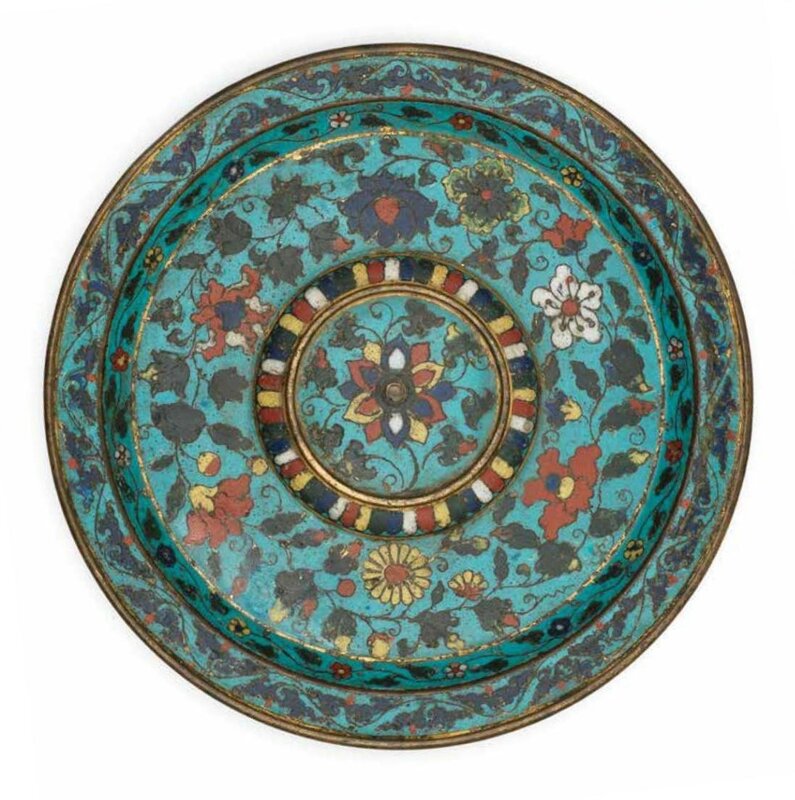



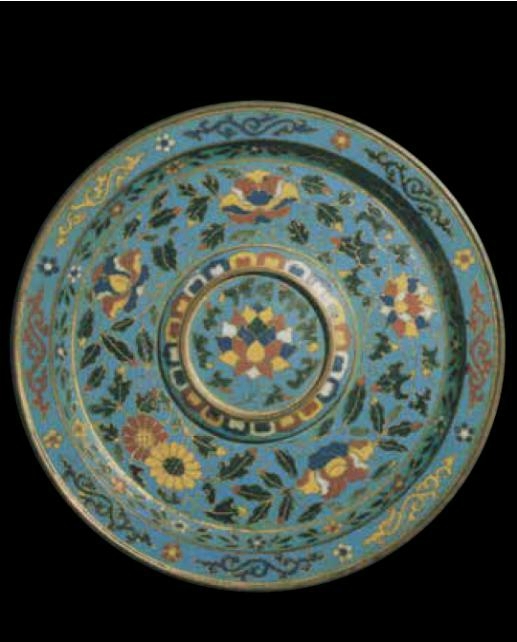



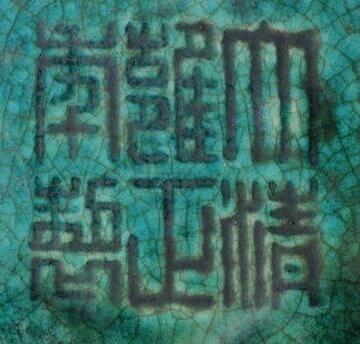




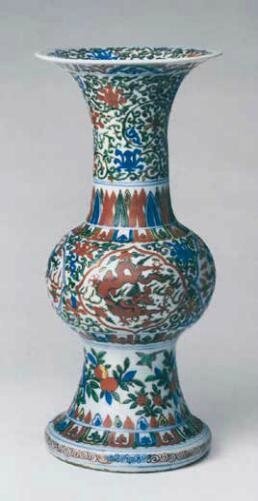



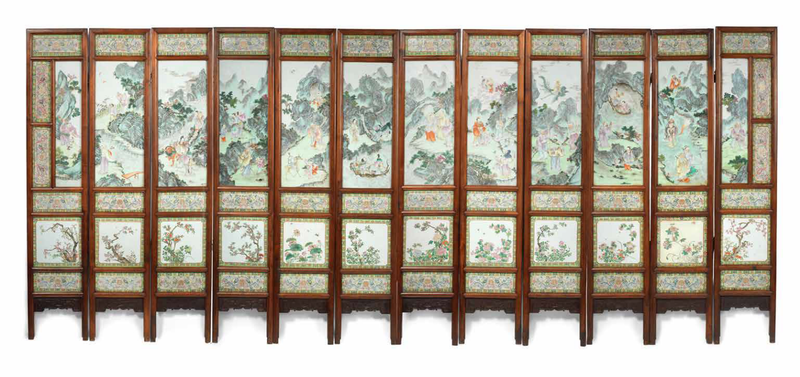
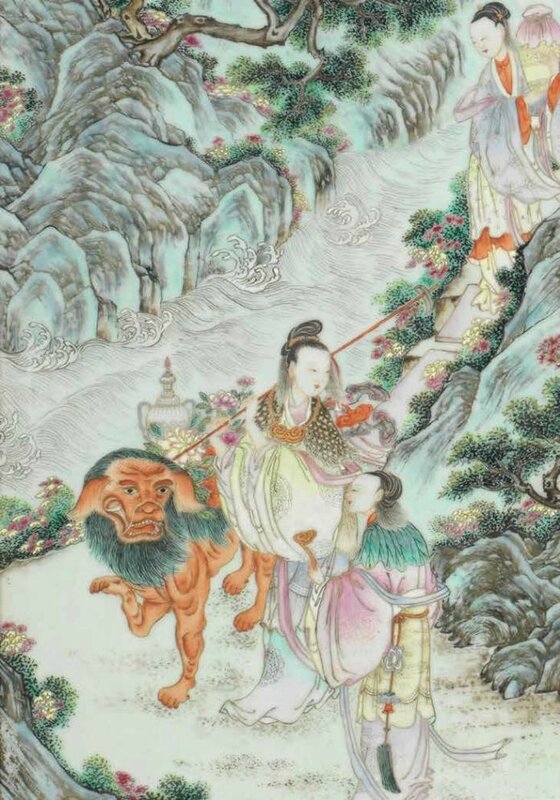




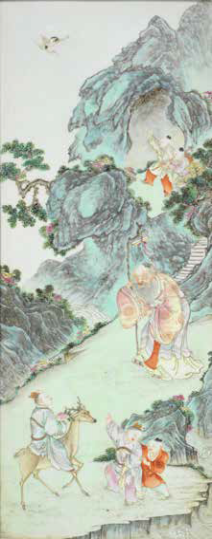
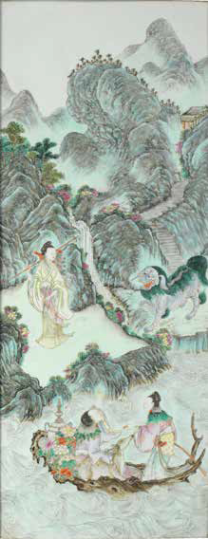


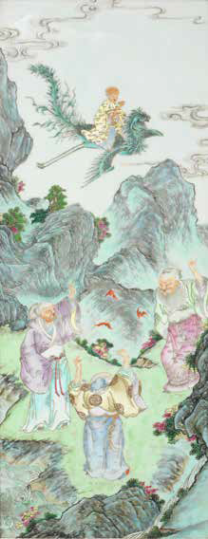



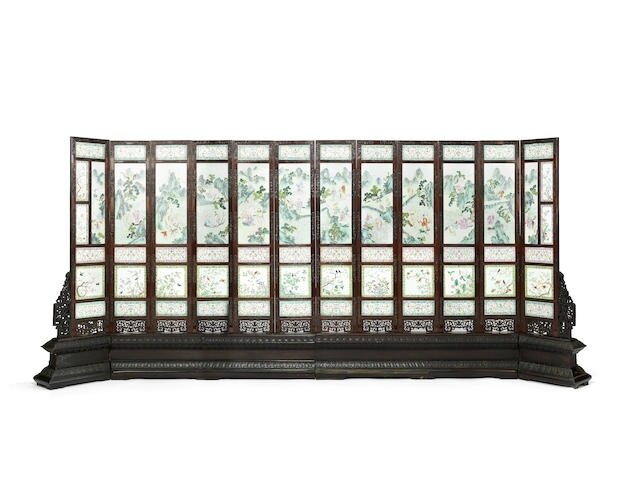




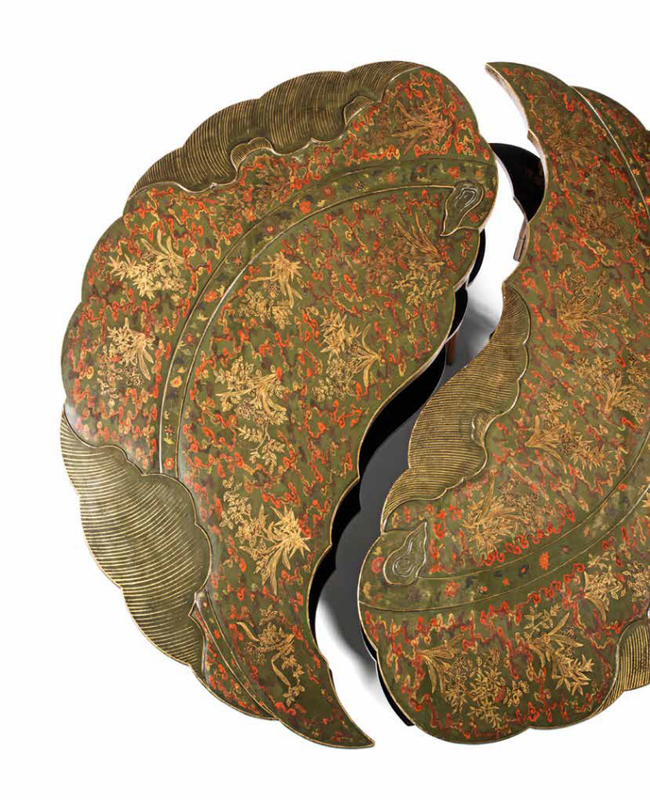
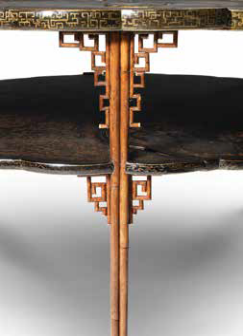

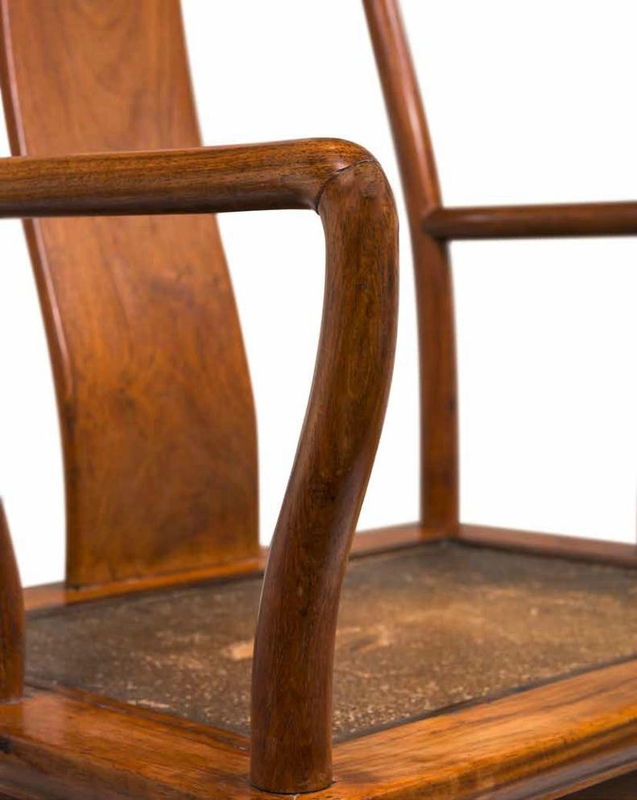


/http%3A%2F%2Fstorage.canalblog.com%2F12%2F79%2F119589%2F129687802_o.jpg)
/http%3A%2F%2Fstorage.canalblog.com%2F12%2F64%2F119589%2F129455644_o.jpg)
/http%3A%2F%2Fstorage.canalblog.com%2F75%2F53%2F119589%2F129451230_o.jpg)
/http%3A%2F%2Fstorage.canalblog.com%2F65%2F52%2F119589%2F129430833_o.png)